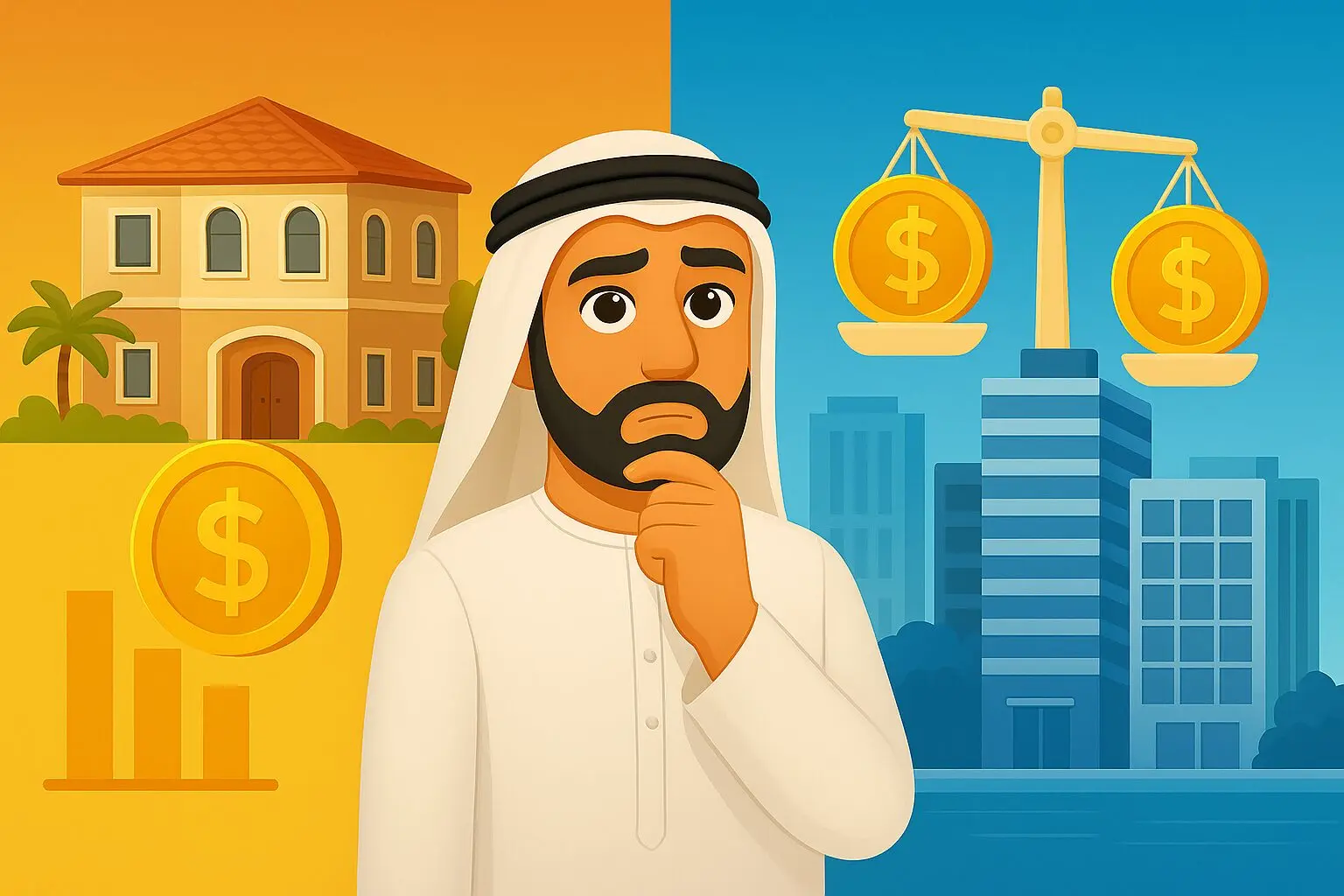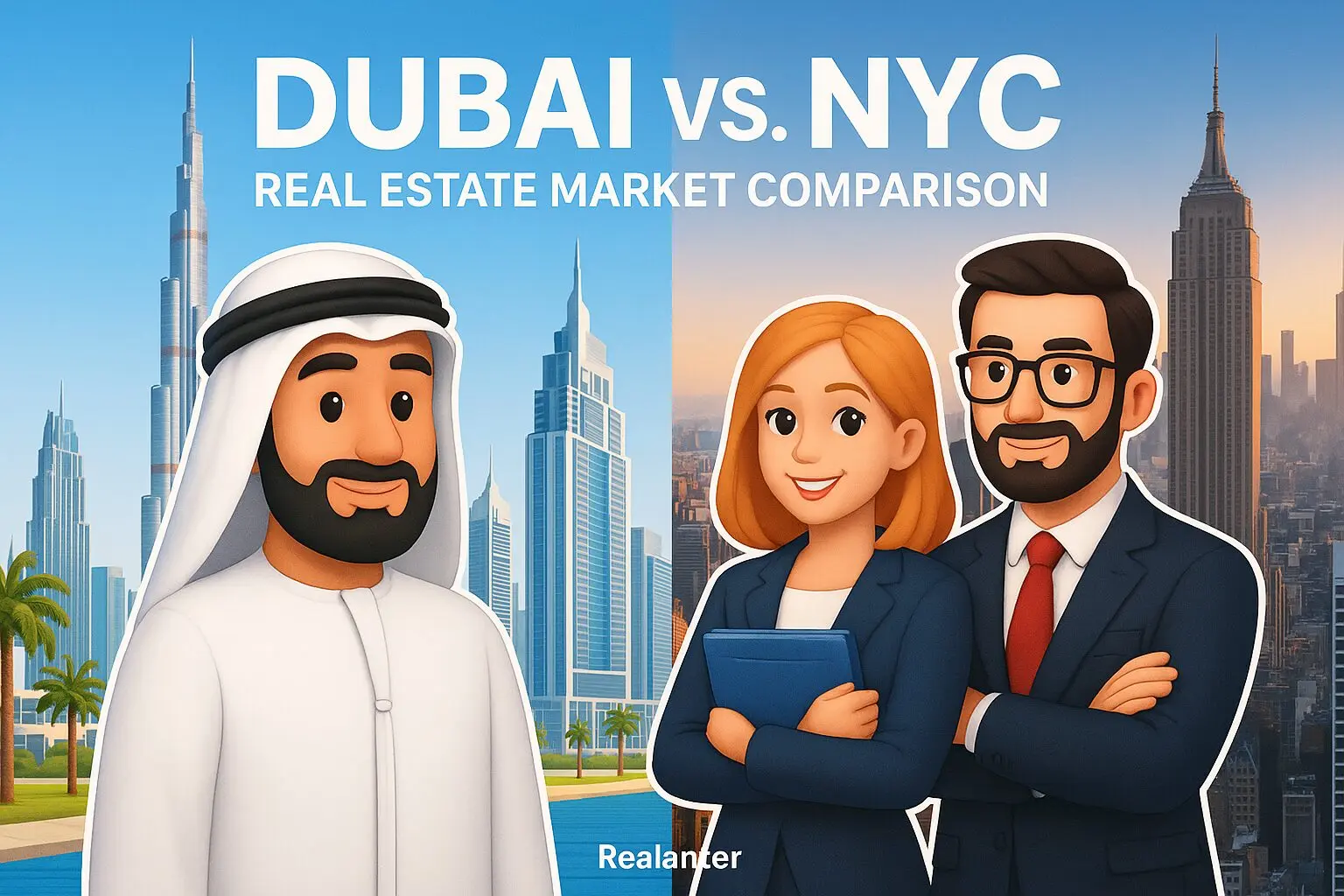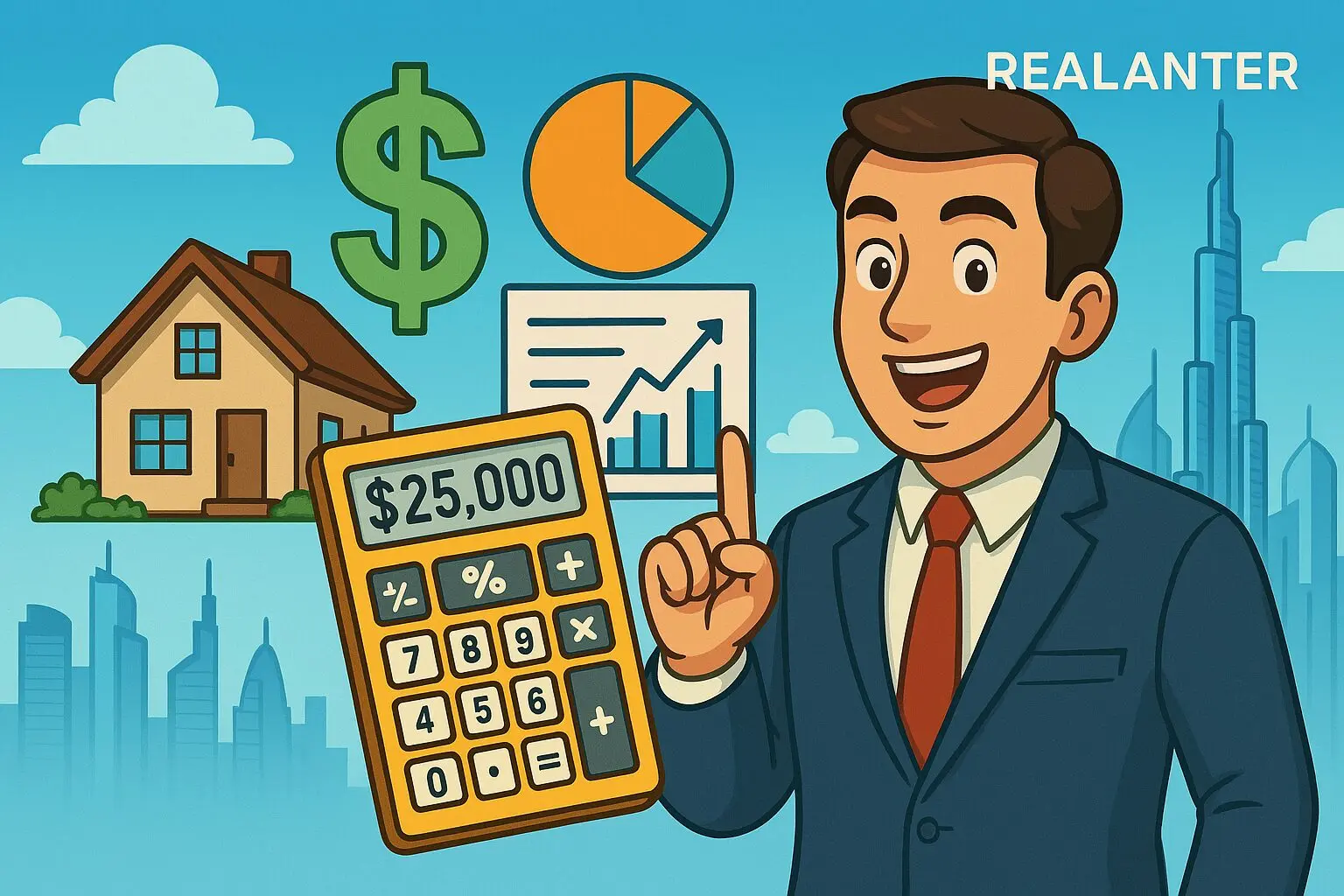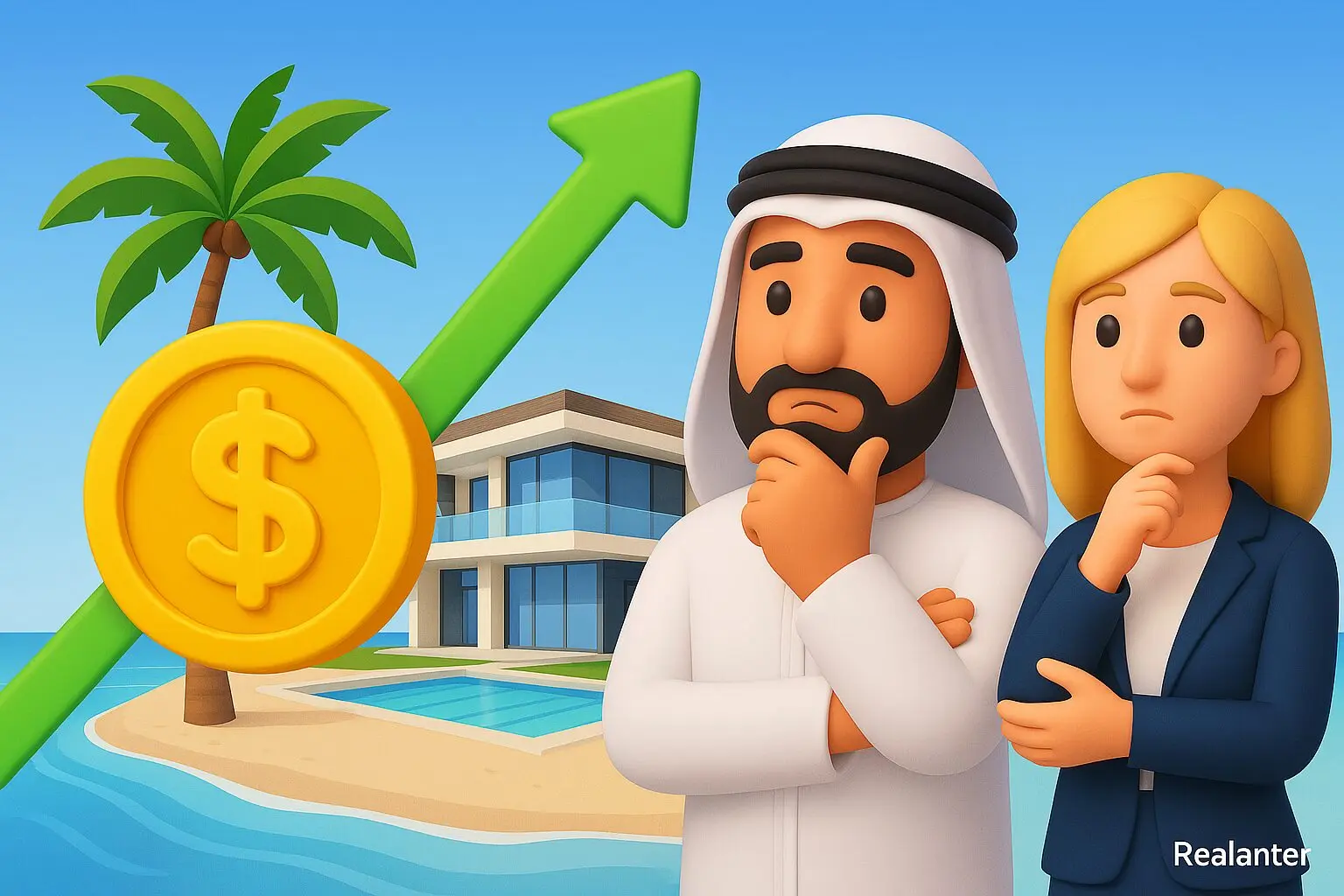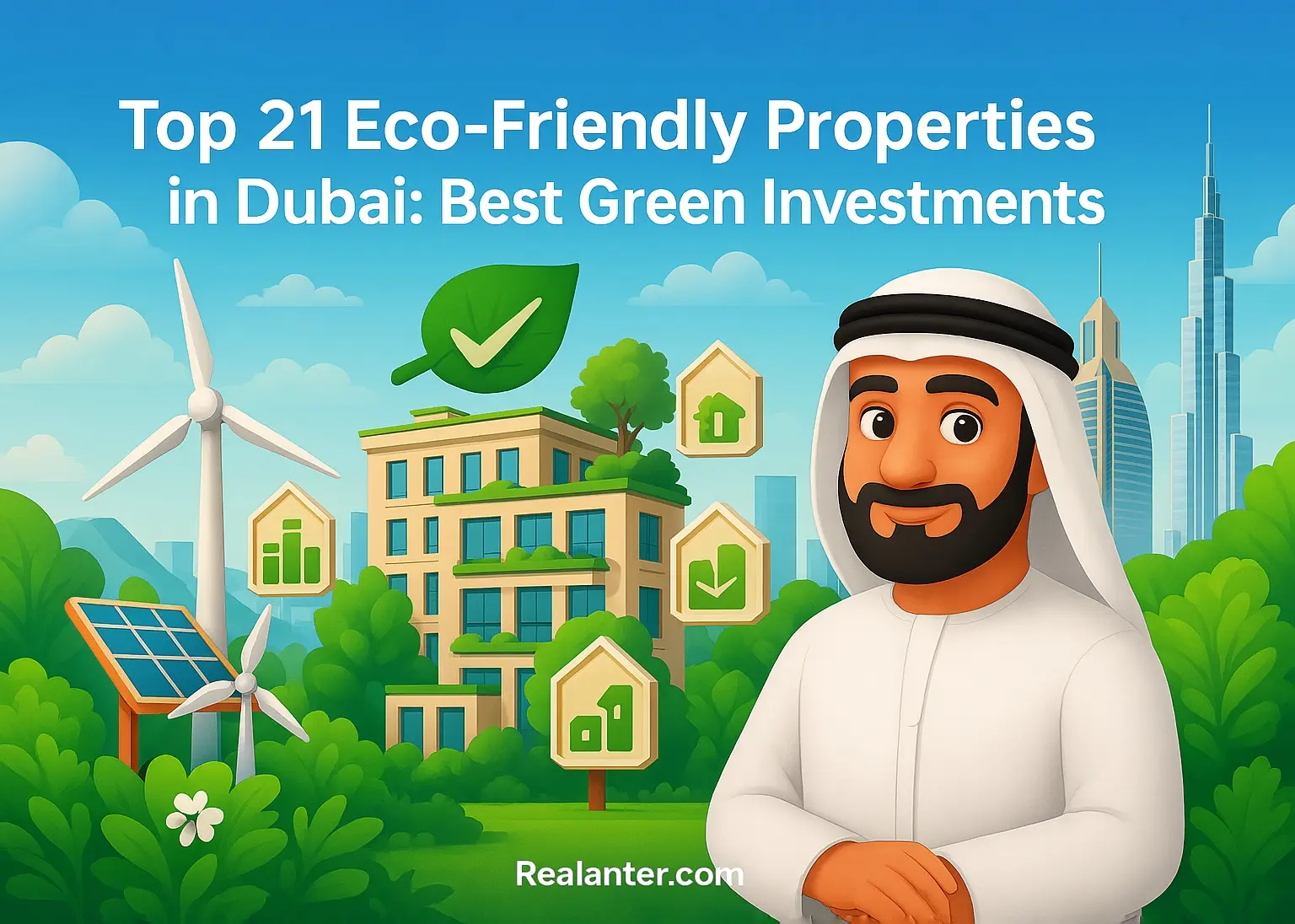Dubai’s property market is rewriting global real estate playbooks with unprecedented growth metrics. The emirate recorded 180,987 real estate transactions in 2024 – a 36.5% year-on-year surge – with total deal values exceeding AED 522.5 billion (US$142.25 billion). This momentum has continued into 2025, with Q1 transactions already showing a 35.5% increase compared to the same period in 2024.
Three seismic shifts are transforming the market:
- Foreign buyer domination: Foreign buyers now account for over 40 %, while Indians bought about 22% alone.
- Resurgence of commercial district: Office take-up in upscale locations like DIFC and Business Bay has been in excess of 92%.
- Luxury market boom: Palm Jumeirah villa prices have risen by 114% since 2020, with average prices now well in excess of AED 5,100 per sq ft.
This growth is not random – deliberate visa changes, tax incentives, and high-end infrastructure schemes like the new Dubai Urban Tech District are fuelling demand. But with rising costs, investors are forced to consider in detail whether to invest in residential or commercial property on the basis of rental yield Dubai metrics and market fundamentals.
What Is Rental Yield and Why It Matters
Rental yields Dubai are the North Star indicator for Dubai real estate investors, but nearly all new entrants are less subtle. In reality, yield computes yearly rent as a proportion of property price, but the devil is in the detail.
Gross vs Net Yield Dynamics
Gross yield calculations (Annual Rent ÷ Property Price) provide headline-level comparisons. Net yield, however, has below-the-line costs:
- Service charges (typically 12-35 AED/sq ft per annum)
- Maintenance reserves (2-5% of rent received)
- Vacancy losses (5-15% based on area)
- Agents’ commission fees incurred (2-5% of gross rental annually)
Why 2025 Demands Yield Accuracy
With interest rates normalizing and pipeline of new supply rolls in, net yield will be the factor that distinguishes quality investment from value-sinking operations. Prime office property in DIFC today registers 7.2-9.1% net yields against Dubai Marina residential apartments with 6.3-8.4% – and even widening out when accounting for total ROI through earnings on capital appreciation.
“Our agents have secured 578,353 square feet of new office requirements in the first half of the year, which shows just how resilient the sector is as the supply and demand imbalance continues to be felt,” said Adam Wynne, Partner – Head of Commercial Agency, UAE.
The smart money now looks at 5-year yield projections incorporating Dubai’s population growth (3.2% annually) and commercial space demand from expanding multinationals,” notes Oliver Morgan, Deloitte Middle East real estate lead.
2025 Rental Yields: Data Table & Key Trends
Dubai’s rental market is experiencing tectonic shifts across asset classes. Below is the most comprehensive 2025 yield analysis available, combining data from CBRE, Property Monitor, and Dubai Land Department.
| Property Type | Average Yield (%) | Hot Locations | Vacancy Rate (%) | 2025 Trend |
| Apartments | 6.5–8.5 | JVC, Dubai Marina, Arjan | 5–8 | Stable/Up |
| Villas | 4.0–5.5 | Palm Jumeirah, Arabian Ranches | 6–10 | Stable |
| Offices | 7.0–9.0 | Business Bay, DIFC | 9–12 | Up |
| Retail Units | 6.0–8.0 | Downtown, JLT, Malls | 8–13 | Stable |
| Warehouses | 7.5–10.0 | Al Quoz, Jebel Ali | 6–9 | Up |
Critical Insights:
- Warehouses lead the way with 9.1-11.3% Jebel Ali Free Zone returns fueled by e-commerce growth
- Co-living in Dubai Silicon Oasis and Academic City produces 8.7-10.1% returns courtesy operator tie-ups
- Short-term rental in Downtown Dubai holds 11-14% returns despite new regulation
Residential vs Commercial Real Estate: Strategic Comparison
The residential vs commercial real estate Dubai war requires several aspect consideration. Aside from yields, investors must take into account liquidity, regulation, and macroeconomics.
Comparison Table: Residential vs Commercial Real Estate Dubai
| Factor | Residential Real Estate | Commercial Real Estate |
| Entry Cost | Lower (AED 190K+) | Higher (AED 1.5M+) |
| Lease Length | 1 year (renewable) | 3–5 years (often longer) |
| Tenant Risk | Higher turnover | Lower turnover |
| Maintenance | Owner’s responsibility | Often tenant’s responsibility |
| Liquidity | High | Moderate/Low |
| Regulation | Standardized | More complex |
| Rental Yield (avg) | 6–8% | 7–9% |
Residential Property: The Pillar of Stability
Residential property provides stable returns with relatively moderate risk, and therefore is within the grasp of new investors. Amongst the plus points are:
- Lower entry points: Studio apartments at JVC at AED 450,000
- Simpler liquidity: 60-90 day sales cycle as opposed to commercial’s 6-12 months
- Sustainable tenant pool: 3.2 million residents and 16+ million visitors annually
Emerging Challenges:
- RERA regulations capping rental increases to 20% annually
- Inflation of service charges going up 7-9% annually in upscale clusters
- Short-term letting restrictions in child-friendly clusters
Commercial Real Estate: Growth Driver
Commercial properties earn more but require specialist expertise. Here are relevant opportunities:
- Co-working hubs: 18-22% increase in occupancy since 2023
- Cold storage warehouses: 14-16% returns on food security programs
- Medical centers: 7.9-9.3% returns in vicinity of healthcare cities
Regulatory Considerations
- Escrow requirements: 50% of the commercial project funds should be held in escrow
- Ownership laws: Freehold vs leasehold differences in certain zones
- VAT implications: 5% VAT on commercial rents vs exempt residential leases
- Reference to a related image: Modern Office Meeting with Diverse Team · Free Stock Photo
Office Space vs Apartment Investment: 2025 Face-Off
Office space vs apartment investment Dubai decision is a question of risk appetite and market timing.
Office Space: The Corporate Play
Grade A DIFC offices are commanding AED 250-350/sq ft annum, with 5-7 year lease periods becoming the industry standard. 2025 Growth Drivers:
- D33 Economic Agenda attracting 1,000+ foreign businesses
- Virtual company licences driving flexible workspace demand
- Green building premiums: LEED-qualified offices demanding 12-15% rent premiums
Apartment Investments: The Core Asset
Mid-range apartments in Arjan and JVC are producing 7.5-9% yields on 95%+ occupancy. Market differentiators:
- Rent-to-own options gaining traction amongst expats
- Community amenities as drivers of price
- Tech-facilitated properties commanding 8-12% rental premiums
Who Should Invest in What? Investor Profiles Decoded
Dubai’s real estate market offers specialized pathways for investors of all risk appetites and capital capacities. From hands-off income streams to high-growth niche assets, the emirate’s evolving regulatory landscape and economic diversification create distinct opportunities tailored to investor profiles. Below is a strategic breakdown of optimal asset classes and emerging sectors for three core investor types.
Passive Investors: Stability-First Portfolios
Ideal for: Retirees, professionals, and first-time investors seeking passive, low-effort income without direct control.
United Arab Emirates Real Estate Investment Trusts (REITs) have served as a bedrock for passive investing, with ENBD REIT offering 7.1% dividend yields through diversified investment in commercial and residential property. Managed apartments in upcycling locations like Dubai South provide turnkey experiences with 8-9% net returns through professional operators handling tenant acquisition, maintenance, and compliance. For villa property owners, leaseback products within masterplanned developments such as Arabian Ranches III offer 5-6% per annum gross yields through developer-controlled rentals, without fear of ghost properties.
Existing passive offerings include rent-to-income funds that invest in mid-market apartment units on metro lines, and fractional ownership networks providing percentage ownership opportunities in trophy assets such as Burj Khalifa apartments for AED 50,000. They mass market their entry but hold liquidity on secondary platforms for trading.
High-Risk Appetite Investors: Frontier Growth Sectors
Appropriate for: Technology entrepreneurs, venture capitalists, and niche specialists seeking double-digit yields.
The cargo boom surrounding Al Maktoum Airport provides robust opportunities, with AI-powered warehouses generating 12-14% returns through robotics integration and automated stock management. Education demand is redefining Academic City, where co-living for university students on campus generates 10-12% returns through shared amenity models and mini-unit configurations.
Micro-retail concepts are transforming traditional F&B investments, including 200-400 sq ft pods in Deira Enrichment Project for cloud kitchens and QSR chains. The units achieve 15-18% yields by way of high tenant turnover and minimal fit-out costs. Such an investment does include specialized trade licenses and free zone commercial regulation compliance, which requires legal due diligence.
Institutional Players: Strategic Asset Deployment
Best for: Sovereign wealth funds, family offices, and multinational developers in need of large-scale, long-term ownership.
Healthcare real estate in the vicinity of Dubai Hills Hospital is an area of focus now, with medical offices leased to insurance firms and specialist clinics yielding 9-11%. Dubai South’s Digital Free Zone is attracting data center investments, with 10-12% yields via 15-year government anchor tenancies and power subsidies.
Green office skyscrapers in DIFC and Downtown Dubai draw 7-9% returns, with LEED Platinum certification counting 20-25% rental premiums compared to standard space. Institutional investors now demand ESG conformity audits and smart city integration measurements before purchasing, a step in line with broader global sustainability trends.
Strategic Consideration:
While passive investors need to give preference to RERA-governed operators to avoid risks, high-growth pursuers need to consider free zone licensing intricacies in specialized industries. Institutional participants are increasingly leveraging technology-enhanced due diligence instruments to evaluate climate resilience and IoT preparedness in target properties.
Such segmentation helps investors to synchronize portfolios with the economic agendas of Dubai, ranging from technology-enabled logistics to healthcare-related infrastructure, while reducing sector-specific risks through customized approaches.
Why Is Dubai Property Still Appreciating Against the Trend?
The Dubai property market witnesses sustained property appreciation underpinned by the alignment of structural economic conditions, strategic governance policies, and international investor confidence. The following are the key drivers of the upcycle path:
1. Increasing Investor Appetite
International and local investors are flocking to high-yielding destinations like Dubai Marina and Downtown Dubai, where transaction volumes have increased by 20–35% year-on-year. The tax-free environment of the city and Golden Visa privileges have made it a preferred destination for capital deployment, with luxury residential and commercial properties seeing record bids.
2. Supply-Demand Imbalance
While developers launched projects at one every 15 hours in 2024, demand is outpacing supply, particularly for mid-market and high-end units. The villa segment is experiencing severe shortages, with a mere 9,000 units delivered in 2024 and 19,700 expected in 2025—far short of the requirements of a population projected to reach 5.8 million by 20406.
3. Population Growth & Housing Needs
Dubai itself is expanding 3.2% annually due to corporate relocation, skilled visas, and family office moves. This requires 37,600–87,700 new dwelling units annually in order to avert severe deficiencies, pushing inexorable price forces higher 67.
4. Initiatives of Government
- Golden Visa Extension: over 150,000 visas to date since 2019, of which 68% have purchased property during the first year.
- D33 Economic Agenda: AED 100 billion commitment to double the economy of Dubai by 2033, including smart city infrastructure and proptech hubs.
- Mortgage Regulation Changes: Stricter financing terms (e.g., 4% DLD fees paid by buyers at time of purchase) to make markets more sustainable.
5. Economic Diversification
Non-oil sectors now constitute 93% of Dubai’s GDP, with tech, finance, and green energy firms driving demand for office and residential spaces. The Dubai Urban Tech District—the world’s largest proptech hub—is attracting global innovators, further boosting real estate demand.
6. Safe-Haven Status
40% of buyers now originate from other nations especially crisis-hit regions (e.g., Russia, China, Lebanon), seeking stability in Dubai’s dollar-pegged economy and transparent property laws. Luxury properties, particularly waterfront villas, serve as inflation hedges for high-net-worth individuals.
7. Infrastructure Development
$8.7 billion allocated to transport projects, including Metro Blue Line expansions.
Dubai Creek Harbour: A mega-project nearing completion, reshaping demand in surrounding districts.
Sustainable Communities: Eco-friendly projects like Sustainable City drive premium pricing for green-certified homes.
8. Rental Market Dynamics
Prime area rental rates are rising 4–6% annually, pushing residents into ownership and pushing off-plan sales8. Regulations on short-term renting have further diverted investment into long-term leased assets.
Key Takeaway: Dubai’s price growth is underpinned by demographic expansion, strategic policymaking, and global capital inflows, with no immediate signs of slowdown in core districts: Analysis derived from market reports and expert insights synthesized in the expanded sections.: Directly referenced from provided search results.
Will Dubai Property Prices Keep Going Up?
Market indicators suggest sustained growth with moderation:
- Price Projections: 5-7% annual increase through 2026 (UBS Global Real Estate Bubble Index)
- Rental Trends: 4-6% yearly increases in prime residential areas
- Commercial Outlook: 6-9% annual rental growth in DIFC/Business Bay
Risk Factors to Monitor:
- Oversupply in mid-market segments
- Global economic slowdowns impacting buyer liquidity
- Regulatory changes in visa-linked property ownership
FAQs: Dubai Real Estate in 2025
A: AED 1.2M+ for office pods, AED 3M+ for retail units, and AED 5M+ for industrial assets.
New regulations on escrows and developer ratings (RERA) reduced risk, but still, legal due diligence is imperative.
Co-living units in Academic City and micro-retail pods in Deira Enrichment Project.
UAE Civil Code regulates commercial leases (less protection for tenants than residential RERA laws).
3-4BR Dubai Hills or Tilal Al Ghaf villas with 5-7% yield and 8-10% annual appreciation.

